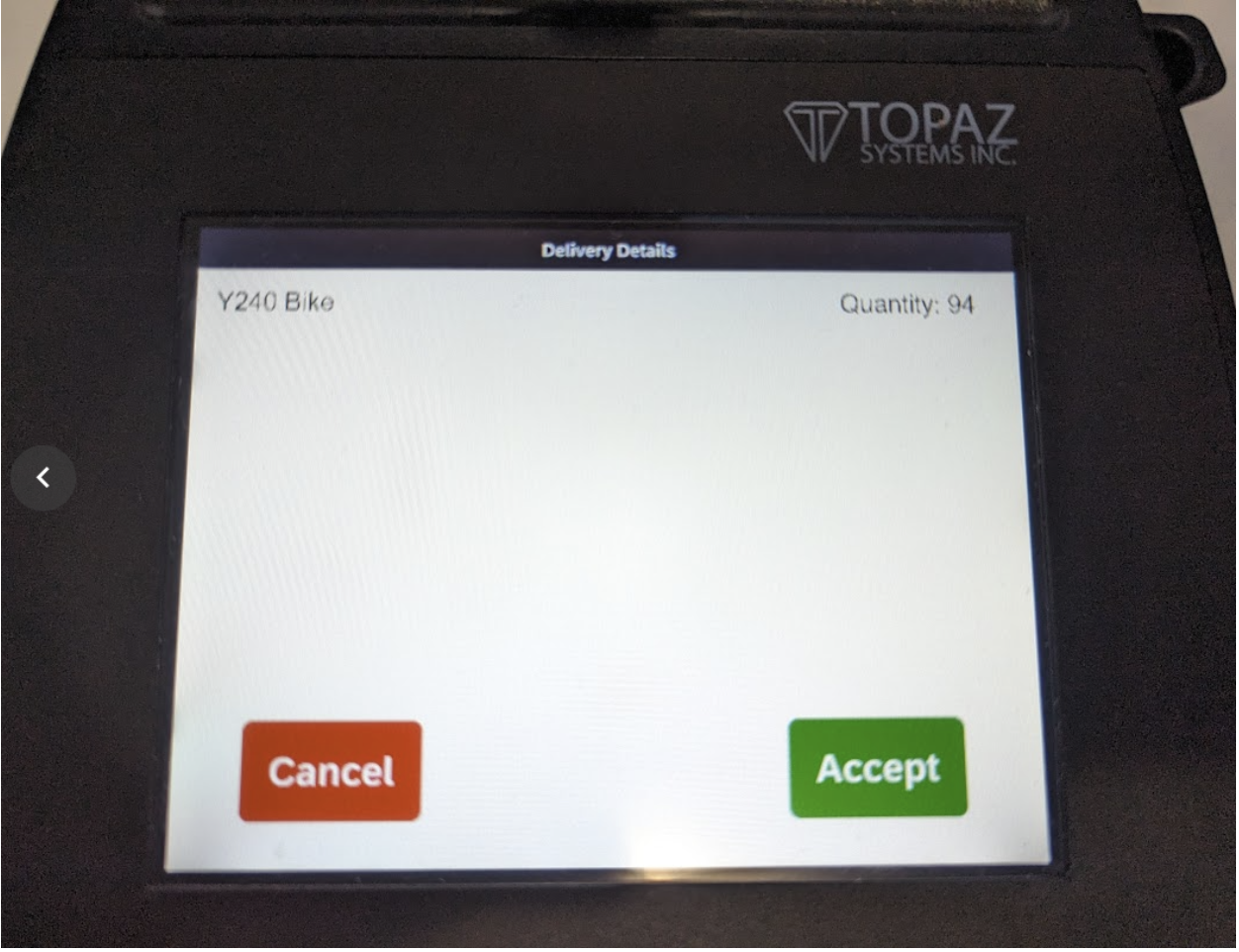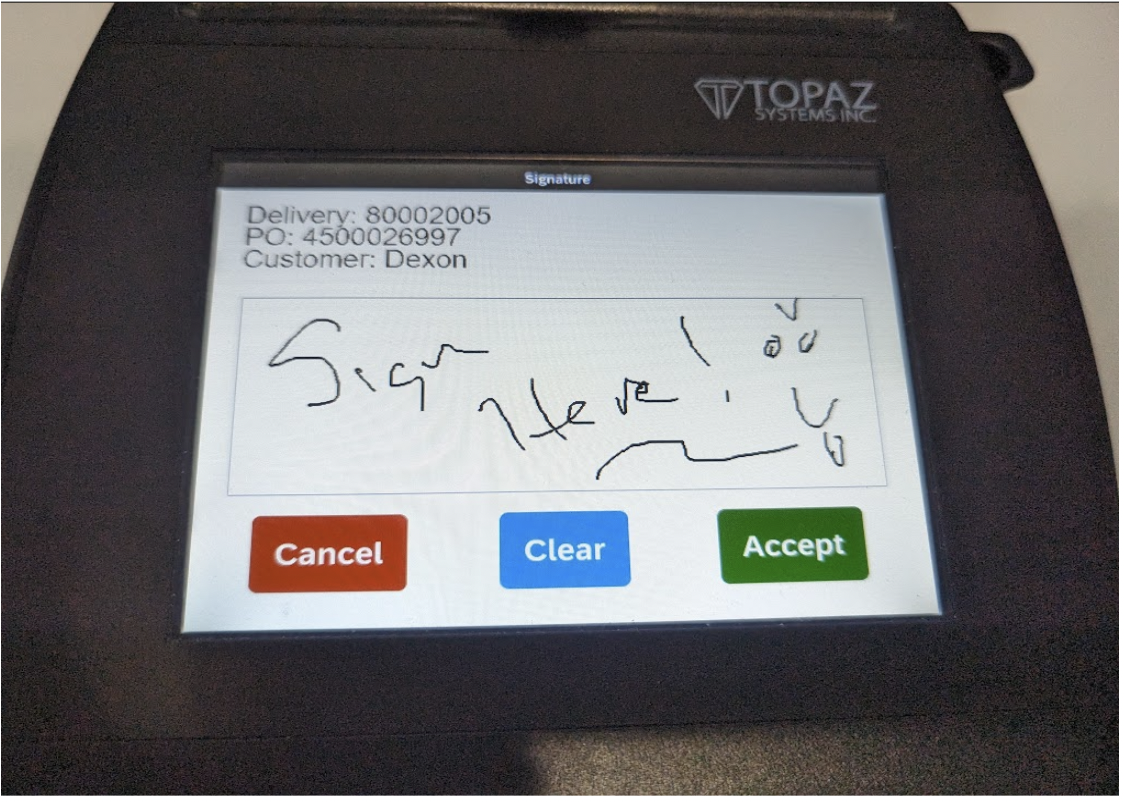Can a Topaz Signature pad be integrated with your S/4HANA system? The short answer is yes. Whether you need proof of delivery or want to store signatures in your S/4HANA system for audit and compliance purposes, Topaz Sigpad and SAP S/4HANA integration can help. In this blog, I will go over what the Topaz device is, the benefits of a Topaz integration with built-in use cases, design to development overview, development prerequisites, a high-level implementation, and a few tips.
What is a Topaz Sigpad Device?
Topaz devices are electronic signature pads used to capture signatures electronically. They are used in various industries, including healthcare, retail, and transportation. Topaz devices are known for their reliability, accuracy, and ease of use.
Benefits of Topaz Integration
Topaz integration with SAP S/4HANA can offer several benefits for businesses using Topaz devices or looking for a signature solution to incorporate with their SAP systems.
- Improved efficiency: Topaz integration can help automate the process of capturing and storing signatures, which can save time and improve efficiency. For example, in a store, customers can sign on to a Topaz device to confirm receipt of their purchase order, which can then be stored in SAP S/4HANA automatically. This eliminates the need for manual data entry and reduces the risk of errors.
- Reduced compliance risks: Topaz integration can help businesses comply with various regulations that require electronic signatures. A use case might be in the medical device industry; Topaz devices can capture patient signatures for consent forms, which can help businesses comply with HIPAA regulations.
- Streamlined sales process: Topaz integration can help businesses to streamline their sales process. Here’s a real-world scenario. Customers can sign on a Topaz device to confirm their purchase orders or contracts, which can be automatically processed in SAP S/4HANA. This helps businesses shorten the sales cycle and close more deals.
- Improved patient experience: Topaz integration can help improve the patient experience by reducing the paperwork patients must complete. For instance, patients can sign on a Topaz device to consent to medical procedures or to acknowledge receipt of discharge instructions. This can make the patient experience more convenient and efficient.

Design-to-Development Overview
The first step before implementing a signature capture solution is to gather requirements. I highly recommend a design-thinking workshop facilitated by one of Mindset’s experienced UX strategists. This involves working with the customer to understand their business needs and requirements for the signature capture process and understanding the type of signatures they need to capture, the documents that need to be signed, where the signatures need to be stored, and the users who will be using the device to capture their signatures. This would include identifying where the signature capture process gets triggered in the business process. However, is it from SAP GUI or WebGUI, or do you want to launch it from a Fiori application?
Once the requirements have been gathered and agreed upon, the next step is to design the signature flow. Additionally, this includes designing the signature screens, the workflow for capturing signatures, and the integration with SAP. Design the signature screens to ensure ease of use and understanding, and streamline the signature capture workflow for efficiency. Ensure secure capture and storage of signatures within the SAP environment through the integration.
After designing the signature flow, the next step is to develop and test it. This entails using Topaz’s SDKs to initialize the device, paint images on the screen, set and query hotspots for navigation between screens, and ultimately capture the signature to send it to SAP for conversion and storage. Admittedly, the challenges arise here. It is essential to have a deep knowledge of the properties, functions, and methods provided by the SDKs and how they work together. You could spend much time spinning your wheels without the proper experience.
Prerequisites
We utilized a Web approach and a Windows approach in our proof of concept. However, this was the case because we wanted to be able to launch the signature from a GUI Transaction Code as well as a Web GUI Transaction Code. As a result, to integrate SAP with a Topaz device based on our integration scenarios, you need to meet the following prerequisites.:
- A Topaz device *
- SigPlus ActiveX SDK
- SigWeb SDK
- UI5 application
- ABAP utility class
- SigPlus software
- SigWeb installer
* SigGem Color 5.7, T-LBK57GC Model Series
SDKs
Topaz provides SDKs for various programming languages, including Java, C++, and . NET. The SDKs contain the necessary libraries and documentation to integrate the Topaz device into your application.
Documentation
Topaz provides comprehensive documentation for its SDKs and APIs. You may find this documentation on the Topaz website.
Integrating SAP with a Topaz Device
There are a few ways to integrate SAP with a Topaz device, but here are two methods that worked for us:
- ABAP: Create a utility class that utilizes the ActiveX control. The user can execute this utility by exiting or clicking a transaction code button.
- Fiori: Create a Fiori application that loads the SigWeb Topaz library. You can launch this application via a transaction code or any Fiori application, initiating the signature process with a simple button click.
Implementation
The steps involved in integrating SAP with a Topaz device will vary depending on your chosen integration method. However, the general steps are as follows:
- Firstly, install the Topaz SDKs.
- Connect the Topaz device to your computer.
- Develop a custom application to integrate the Topaz device with SAP (option 1).
- Create a utility class that utilizes the Topaz control, allowing you to communicate with the device (option 2).
- Design and Develop the signature screens on the Topaz device.
- Test the signature process.
- Finally, deploy the solution in the SAP environment.
Moreover, once the integration is complete, you can start using the Topaz device to capture signatures electronically in SAP.
Additional Tips
- Firstly, consider your specific business needs and technical expertise when choosing an integration method.
- Secondly, test the integration thoroughly before deploying it in your production environment.
- Finally, ensure your users have the necessary training on using the Topaz device and the SAP integration.
Therefore, following these tips, you can successfully integrate your Topaz signature pad with SAP S/4HANA and reap the benefits of electronic signature capture.
Conclusion
Topaz devices are a versatile and reliable tool that can capture signatures electronically in various business processes. By integrating SAP with a Topaz device, you can improve the efficiency and accuracy of your business processes.
Finally, do you want to learn more about how we integrated a Topaz Signature pad or other device, such as a Zebra scanner with SAP S/4HANA?
Contact us HERE to learn more and how we can help you with your Topaz integration.
View our LinkedIn here.
